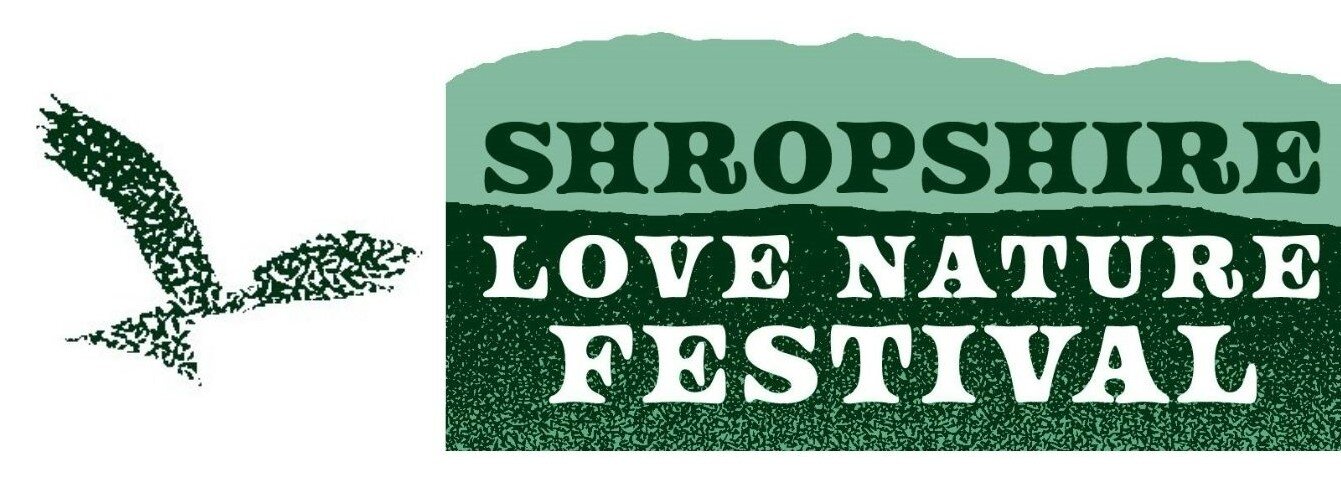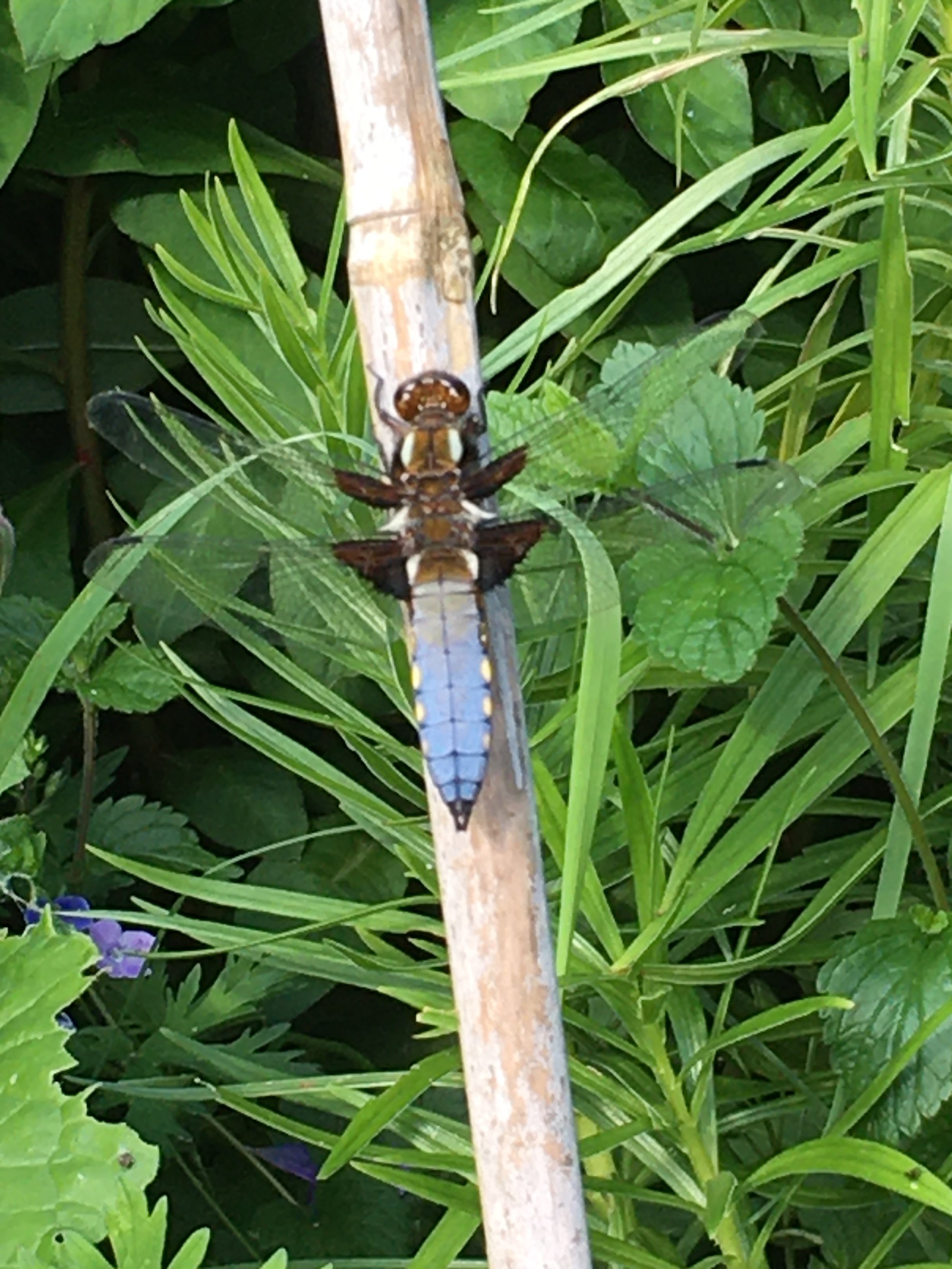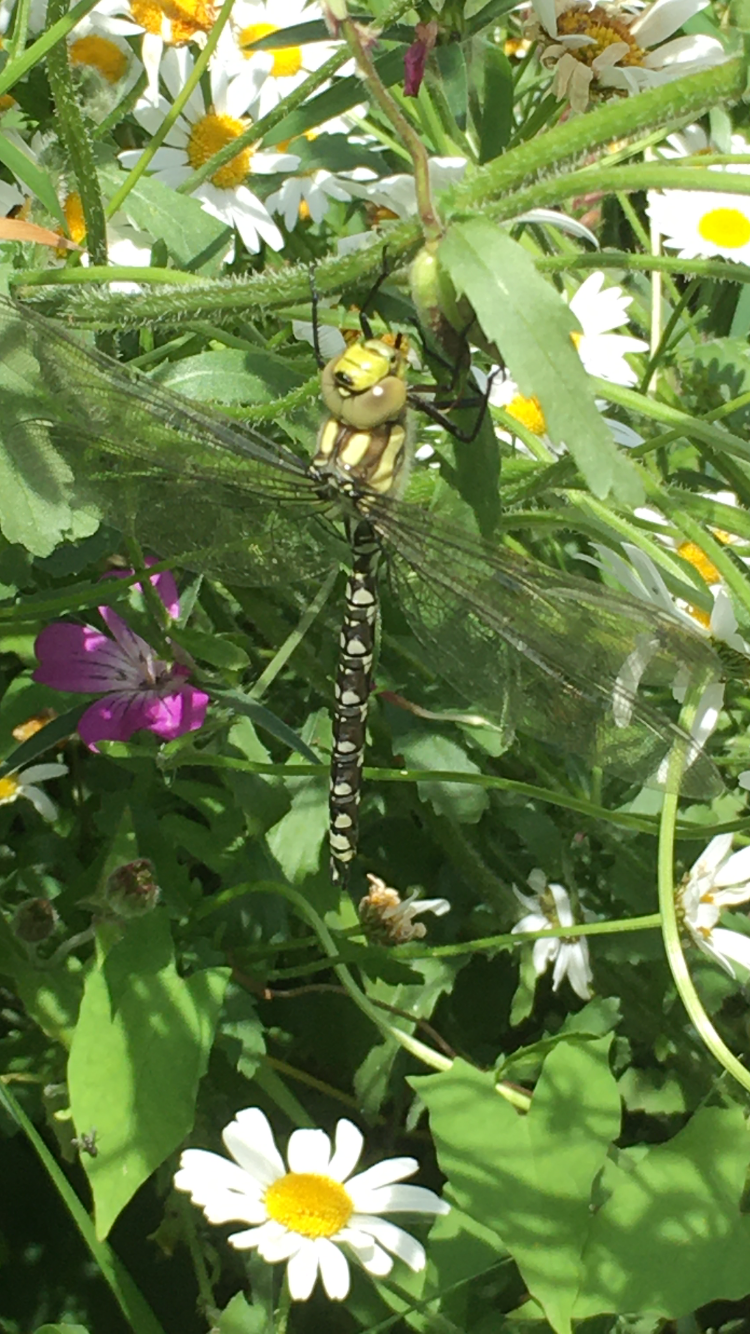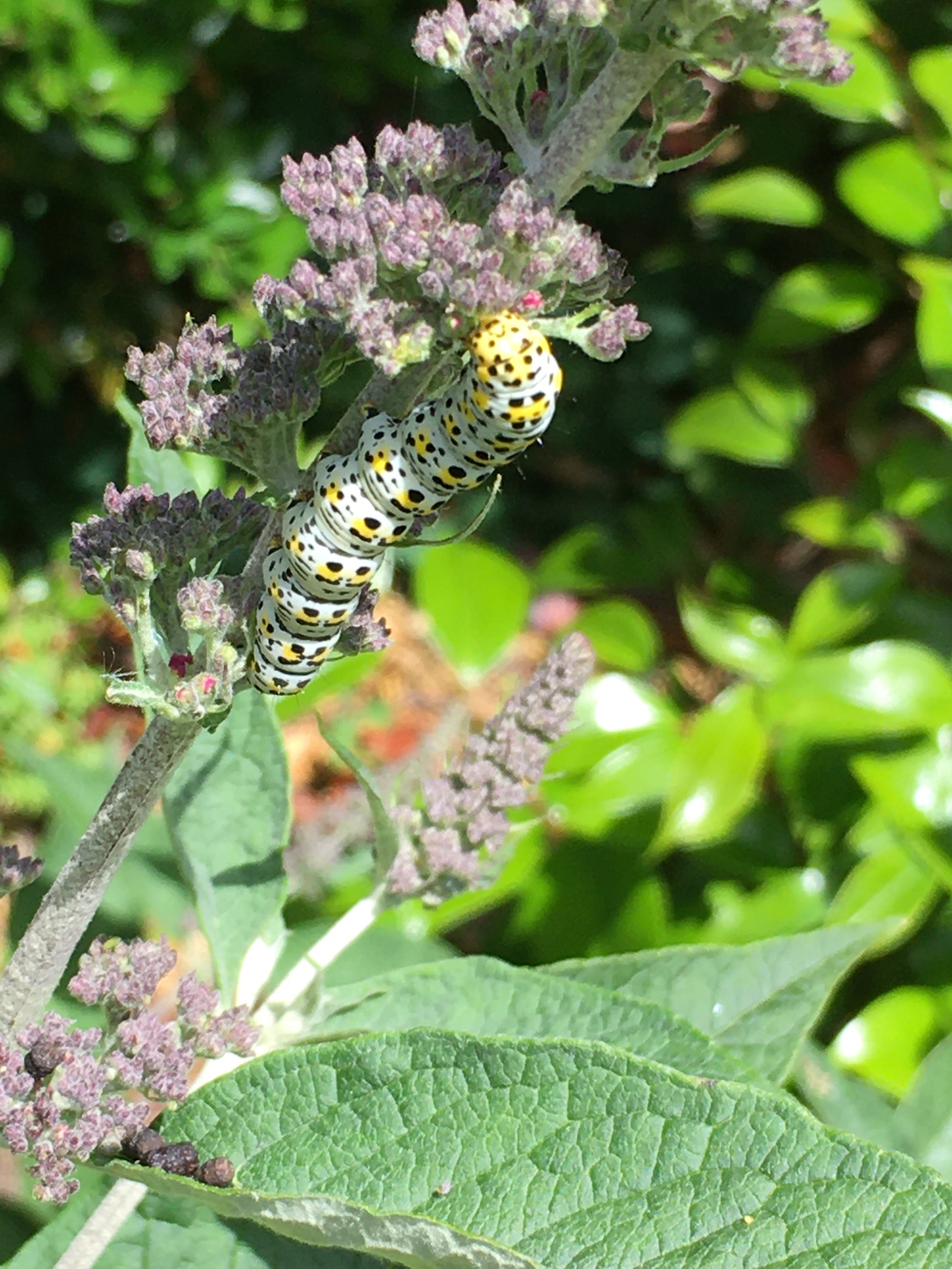How to get joy from your garden
“Nature does nothing without purpose or uselessly.” - Aristotle
NO EXPERT KNOWLEDGE NEEDED
My garden brings me joy, not because it’s perfect, but because I am constantly finding interesting living creatures in it. How has this happened, you may ask? I’ll tell you.
I am not a “gardening for wildlife” expert by any means, so I haven’t “designed” it in the conventional way – my design or plan is to simply attract as much wildlife as possible, from microscopic life in the soil upward. I have no relevant training or academic knowledge, I’m just someone who finds happiness and peace in the natural world and has picked up ways from others on how to make my space more wildlife friendly. It’s also my small contribution to the huge need to make space for nature in our lives. We have made a mess of our beautiful planet and we need to fix it.
Firstly, I must tell you that it really does work! Make habitat that is attractive to living things and they will appear. This doesn’t mean necessarily leaving your whole garden to go natural or “rewild” completely. Without management any small space, as most gardens are, will become dominated by the strongest plants already established.
A POND IS A WONDERFUL THING
I am lucky enough to have a small pond. It has been here over thirty years and is inhabited by many creatures. The largest are the newts, the smallest only visible with a magnifying glass. There are beetles and snails and a healthy population of damselfly and dragonfly nymphs, all common species but still thrilling to see when they emerge as adults. Each year Common Darters, Hawkers and Red Damselflies appear having spent years in the pond as larvae. This year there have been two new visitors – a Broad Backed Chaser dragonfly, and a Southern Hawker, but I won’t know for a while if they have used my pond for breeding.
How to design your garden
I shudder when I think of all the tidying I used to do all year round in the garden. Don’t get me wrong, there’s still a lot of work needed but the design comes in picking the right places to leave alone, or adding to the habitat available with small things - a pile of small logs, stones or sticks where reptiles and amphibians can find shelter, wild flower seeds sown along a hedge, hedge bottoms left wild for small mammal runs. I’ve found frogs in all sorts of unexpected places. You would think in hot weather they would prefer the pond, but I am just as likely to meet them in the herb garden or under a hedgerow. Not over tidying in the autumn means you will be leaving homes for an assortment of invertebrate life.
I still have flower beds, now full of plants that attract pollinators. Our lovely native flowers can sit easily beside “garden” species, like this Toadflax growing in amongst Geranium.
How you can help bumble bees and other pollinators
The number of bumble bee species has increased dramatically over the years, this year I have lots of Red Tailed. A small amount of reading taught me to vary the plants with different kinds of flowers for diversity – some with single flowers, some composite, and most importantly, to have nectar producing plants flowering for as long a season as possible. Each year I try to add at least one for a particular insect or creature. This year I found birds’ foot trefoil growing so have let it flourish for the caterpillars of common blue butterflies, as well as for the bees as it is a good nectar source.
Last year I planted mullein and was rewarded this week by my first sighting of a mullein moth caterpillar. It was not on the Mullein but munching on a Buddlea, but that’s wildlife for you!
Create your own mini-meadow
I’ve also started a mini meadow, partly with plug plants of perennials like Ox Eye Daisy, Meadow Cranesbill and Knapweed, all quite easy to grow from seed. It doesn’t look great yet, but I know it will improve year by year and already there is a very interesting mix of insect and arachnid life in it. Yesterday two Meadow Brown butterflies were dancing over it – what a thrill!
Grow your own herbs
A herb garden is not only wonderful for attracting pollinating insects but is useful in the kitchen of course as well as being attractive to the human eye. Over the last thirty years I have collected about twenty different types, some I just like the look off, others have wonderful smells and most attract insects. The oregano in particular, so easy to grow, once flowering is a magnet for Mint Moths, Gatekeeper butterflies, bees and hoverflies. The Evening Primrose produces nectar useful to moths, and the Feverfew seems to suit all sorts of life. Some of the herbs make wonderful teas, especially the mints and lemon verbena.
Mint Moth (Pyrausta aurata) on Origano
How to go chemical and peat free
There’s other stuff to consider of course. The need to ditch chemicals and artificial fertilisers, and peat based composts. Most garden centres now have peat free composts, and some outlets are now selling plants grown in peat free mediums. (If you can’t find them ask, so the staff know that there is a demand.) Making your own compost is satisfying, cheap and not difficult, after all its a natural process. All that’s needed is a bit of space, and patience and nature will do the rest. You don’t need chemicals – a healthy population of blue tits will soon get on top of any aphid problem, along with the ladybirds, and other beetles which will appear if there are no insecticides used. What is a pest to you will be food to something else. The larva of many hoverflies for instance are predators of aphids.
Which invertebrates will you attract to your garden?
(and what will follow...)
The plants attract too many insects, bugs and other small creatures to mention, and they in turn attract amphibians and birds. Hedges and shrubs provide cover for wildlife, places to roost and nest and will not only provide you with entertainment and pleasure but also provide useful pest control. This year I have a family of newly fledged blue tits who acrobat their way around the garden picking up juicy morsels to eat. I feed them too of course. Our garden birds need all the help they can get these days.
Consider the soil
The smallest living things of all live in the soil, from microbes to moles. Using garden compost and horse manure I am slowly building up the health of the soil in the garden in the vegetable beds. This will not only hopefully produce better crops but will also give a boost to biodiversity in general. The fungal networks in the soil need preserving too, so not too much digging. Compost and manure can be spread on the top of the soil and the rain and worms will do the rest. Soils are one of the main global reservoirs of biodiversity, supporting the reproduction or life cycles of more than 40% of all living organisms on earth. 1 gram of soil contains up to 1 billion bacteria cells, up to 200 metres of fungal hyphae, and a wide range of living organisms.
Have a go...
Why not have a go at enticing more wildlife into your garden? Even a small patch will help out - a patch of long grass, a small log pile, a dustbin lid pond (see Elen’s blog for instructions), or a few native flowers, and see what happens. You may be surprised.
“Local Action. Collective Impact. Global Change”





